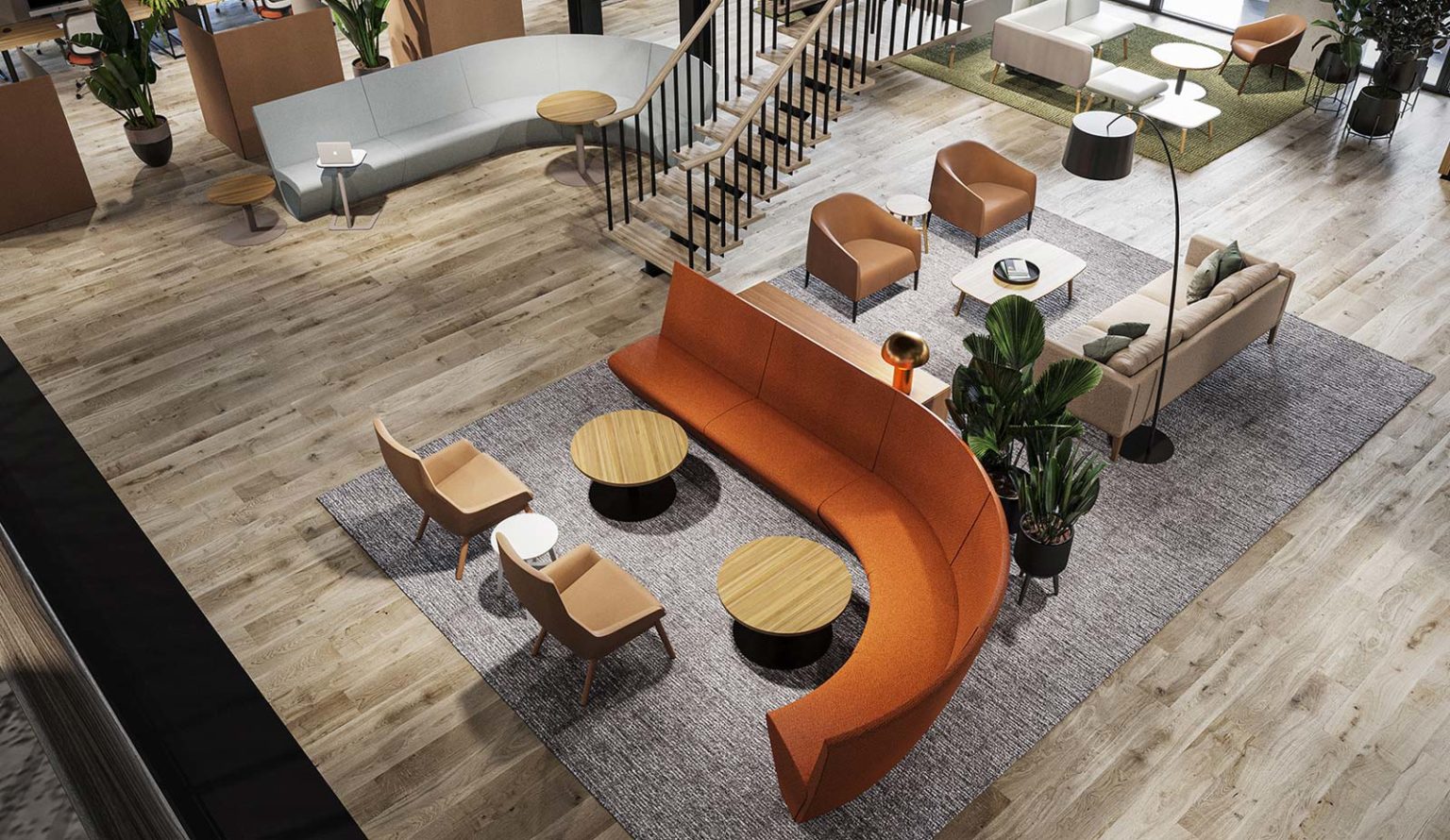2020 was an extraordinary year. Almost overnight, Covid 19 forced us to re-evaluate how we live, work and use our space. We learnt a lot. And we realised that while working in isolation has its benefits, and it also has its limitations. Back in the days when Corona still meant a bottle of beer, office spaces and working practices had already begun to evolve. Organisations were moving towards more flexible working patterns and getting better at accommodating mobile and nomadic staff members. Then Covid hit, and that pace of change accelerated dramatically. Technology showed us that many of us could work remotely. Still, like the overwhelming majority of schoolchildren itching to get back to school, many people are now desperate to get back into the office and meet face to face with colleagues, clients and suppliers.
Ask Mark Barrell, Design Director at Boss Design, why this is, and his response is unequivocal:
So, how should businesses approach a return to the office, and what role will offices and office interiors play in helping us to emerge in a post-pandemic world?
Mark Barrell continues: “Companies and designers have a chance to re-evaluate working practices as well as the role that the office can play in easing that transition and reducing any apprehension or anxiety. We all take cues from our surroundings, and at a time when many people feel anxious about mixing again, organisations need to place both safety and well-being at the top of their agendas. Now, more than ever, we need our environments to provide comfort and reassurance whilst, on a more practical level, offer a level of protection that lets us get on with our jobs safely and efficiently. From an employer’s perspective, they’ll also be thinking about value for money and creating spaces that are future-proofed and flexible enough to adapt to whatever the world has to throw at us.”

Atom Landscape with Marnie high back, Orten sofa and manta armchairs.
It’s a challenge, but one that our Destination Spaces project has in its sights. As well as modular systems that can be quickly configured to suit changing needs (and create engaging, but socially distant spaces), the collection includes focus and multi-person pods and booths, inviting sofas and chairs, as well as relaxed and collaborative meeting spaces, along with more traditional task seating and desk options. Giving organisations and architects everything they need to create agile spaces it’s a collection that is deliberately designed to interact – working together or independently to create adaptable, reassuring and motivating spaces. Atom, for example, is a collection of handcrafted seating, tables and desks intuitively designed to evolve and adapt. With this collection you can create Covid-safe individual desking now, then reconfigure to create more open and informal settings that encourage collaboration in the future.

Mango Focus Booth
Pods and booths like Mango and Cocoon, are ideally suited to doing just that. Striking the perfect balance between privacy and ergonomics, integrated screens, roofs or ergonomically designed high backs, mean you can comfortably escape distraction and peripheral noise without the need to leave the room.
Cutting-edge acoustic engineering, hand upholstery and contoured shapes dramatically reduce background vision and noise, while optional 360 degree swivel functions on some models means you can physically turn your back on distractions for even greater privacy.

Snug with Trinectic task chair
Similarly, a product like Mango can provide focussed space in a busy, bustling office, hotel lobby or airport lounge, whilst Snug is easy to assemble and reconfigure thanks to shared components that extend, reduce or create additional booths.
Summing up, Mark Barrell concludes: “I think we’re already beginning to see the effects of imposed home working beginning to filter through into the workplace. We’re getting more and more companies enquiring about how they can counterbalance formal areas with zones characterised by soft upholstery and a less formal feel – like a home-fromhome – social spaces that encourage connection and promote wellbeing, good-will and collaboration.
The past year has challenged all of us in different ways. Covid19 has inflicted untold amounts of damage and loss on our society that will undoubtedly leave a lasting legacy. But while few things in life are guaranteed, some remain constant and even a cause for celebration. From front-line workers who kept the country going to scientists creating vaccines in record-breaking time, the human capacity to adapt and innovate is inspirational. Similarly, our need as a species to physically meet, collaborate and share shows no sign of abating. The office, it seems, is very much alive and kicking and when restrictions are eased, things that we once took for granted – like going to school or into the office – will take on a new significance and value that seemed unthinkable 12 months ago. Companies need to reflect that shift too and invest in spaces that go above and beyond providing a place to work; to create ones that entice us back, reassure and inspire us, as well as encourage us to interact and collaborate”.
_
Boss Design, July 2021
Boss Design North America
High Point N.C. 27262
t. +1 336 889 9400
Boss Design UK
DY2 8SZ.
t. +44 (0) 1384 455570
© Boss Design.

Please wait while you are redirected to the right page...